Looking for a good read? A new field guide? Or want to travel vicariously this summer?
I’ve surrounded myself with nature books pretty much since the moment I could read. And I still find surprises and new inspiration. I can no more imagine my life without books than I can a life without nature. They’re equally important, and often, connected.
Here are some great new books that have come across my desk. And if you’re looking for more, Cool Green Science has abundant reviews on a variety of topics, from nature in literary fiction and mystery novels, books for birders and for anglers and traveling naturalists, reviews of field guides and nature references, and much more.
-
The Language of Butterflies
By Wendy Williams
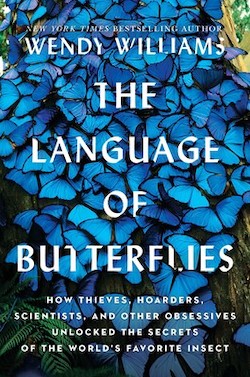
Insects may comprise 75 percent of all named and described animal species, but most humans don’t appreciate them. They’re considered pests and threats, if we consider them at all. Except butterflies.
Butterflies have inspired artists and collectors and scientists alike, as Wendy Williams shows in The Language of Butterflies. A passion for butterflies has inspired some pretty unusual human behavior (to put it mildly), but it has also led to scientific advances.
Williams tells the stories of people obsessed by butterflies and how their observations led us to better understand these insects – and often, helped lead to scientific breakthroughs in other areas like biomimicry and medicine. This is science writing as its best; Williams is a first-rate journalist who spends time in the lab and in the field (including visits to Nature Conservancy projects).
This is an entertaining narrative filled with quirky characters, science history and, of course, plenty of butterflies. One of the fascinating elements of butterfly research is that it has been pursued by some of the biggest names in science, like Charles Darwin, but has also benefited from obsessive amateurs. That tradition continues with the contributions of citizen scientists. Williams pays tribute to them all, along the way showing how a love of butterflies can continue to shape a better future for them and for us.
-
Earth Almanac
By Ted Williams
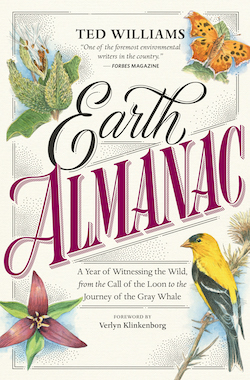
Ted Williams is known for his hard-hitting environmental journalism in a number of publications, including his Recovery column for Cool Green Science. Williams is a conservation advocate because he has a deep love for biodiversity, and that love shines through on every page of this book.
Organized by season, Earth Almanac is a series of entries – really, short essays – on a variety of species, natural phenomenon and natural history. Williams believes, as I do, that a conservation ethic comes from an appreciation for healthy ecosystems and wildlife. While there is no shortage of conservation messages here, this is a celebration of the natural world around us. It’s a delight to read.
You’ll learn the truths about nature myths, and often, why the truth is far more astonishing than fiction. You’ll spy on foxes and listen in on “bawling” toads, and learn about winter butterflies and courting woodpeckers and blood-squirting lizards. It’s one of those books that inspires you to get outside, and just important, better notice what’s happening all around you.
I should note that another book released this spring, by Ken Keffer, has the same title and was also reviewed in Cool Green Science. If you’re a nature lover, both belong in your library.
-
Storied Waters
By David A. Van Wie

Here’s a great read for angler-conservationists looking for a vicarious journey this summer. David Van Wie received the enviable invitation to fish Frenchman’s Pond, the fishing spot of fishing legend Robert Traver (the pen name of John Voelker). Van Wie decided to turn the trip to the pond, located in Michigan, into a literary road trip through the eastern and midwestern United States.
The result is Storied Waters: 35 Fabled Fly-Fishing Destinations and the Writers & Artists Who Made Them Famous. The journey includes some of the most famous fly fishing destinations in the country, but this is more than a book of hatching mayflies and trophy trout. Van Wie offers reflections on literary greats, and why their works still resonate. He fishes Walden Pond and the inspiration for Hemingway’s Two-Hearted River. He visits experts on Aldo Leopold and Louise Dickinson Rich.
He reports on the current conditions of the waters he fishes, including the conservation issues that continue to affect them. And yes, he does plenty of fishing.
-
Wildflowers of the Adirondacks
Vy Donald J. Leopold & Lytton John Musselman
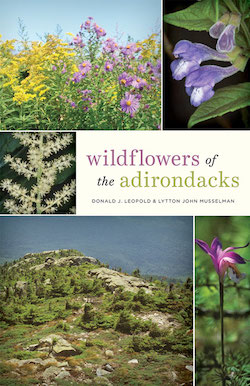
I recently wrote about my love of field guides, and here’s a welcome addition to that collection. The Adirondack Park, totaling 6 million acres, is arguably the largest protected area in the contiguous United States. It is home to wide variety of beautiful wildflowers, and this is the first guide devoted exclusively to the park’s flowers.
This photographic guide provides pretty much anything you could need to identify flowers in the Adirondacks. It begins with a great section on habitat types and plant communities in the park, and then organizes flowers by color for easier identification.
Each wildflower includes a detailed (and readable) botanical account. Of special interest is the coverage of the nearly 40 terrestrial orchid species found in the Adirondacks. The coauthors have taught botany courses for many years, and structured the book based on information their students found most informative and exciting.
-
Mongooses of the World
By Andrew Jennings & Gerladine Veron
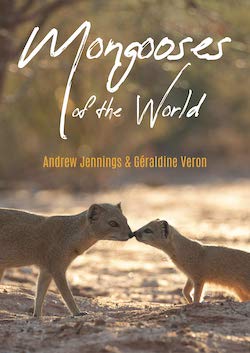
Mongooses are underrated carnivores; they’re often highly effective predators and many have fascinating social lives. Some species thrive alongside humanity in urban areas and others live cryptically in remote wildernesses.
Whether you’re a hard-core mammal nerd or just enjoy watching meerkat shows on TV, this is a great little volume to learn more about these fascinating creatures. It includes species accounts and photos for all 34 of the world’s mongoose species, making it an excellent reference work for those who keep a mammal life list. Some mongooses can be somewhat difficult to tell apart and the descriptions and life histories in this book will be a help.
I especially appreciated the detailed information on all things mongoose: from mongooses in human culture to mongooses as invasive species. There’s a very thorough and readable section on mongoose natural history. And the authors provide an overview of mongoose conservation, including the myriad threats facing this species including overharvesting and habitat loss. Mongooses are often overlooked even by wildlife researchers, and the authors cite the lack of ecological knowledge as a primary threat facing these animals. This book provides detailed information and is a great addition to my collection of mammal references.
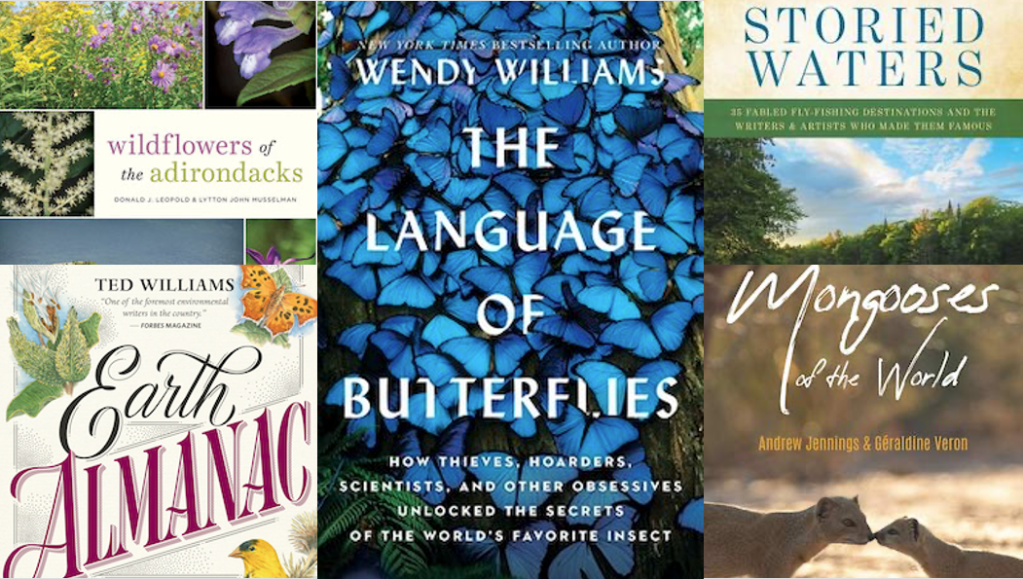



Join the Discussion